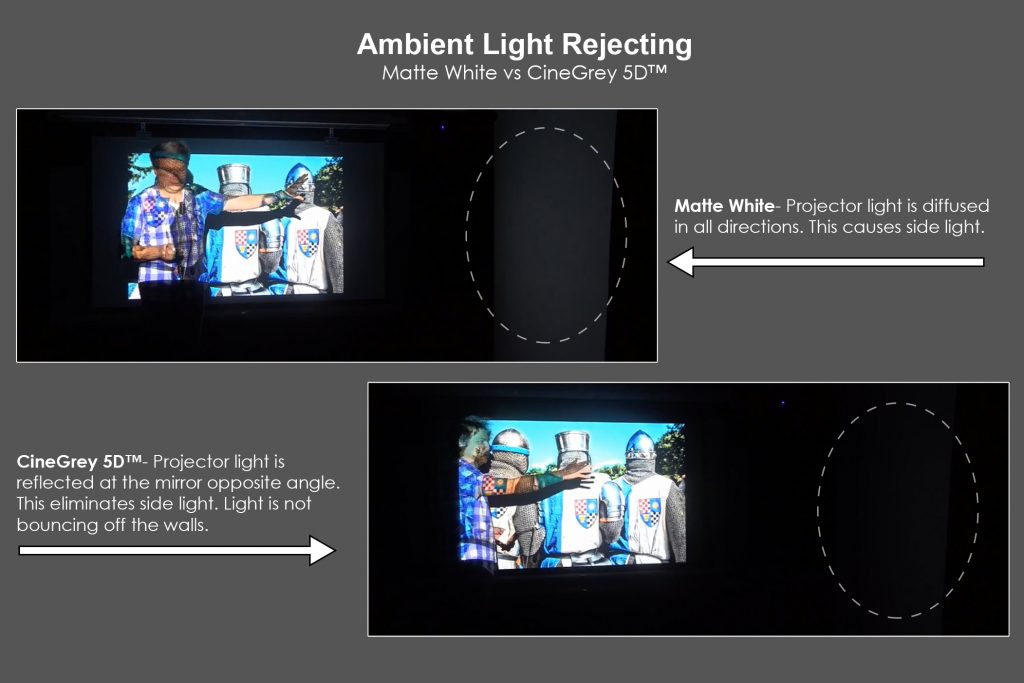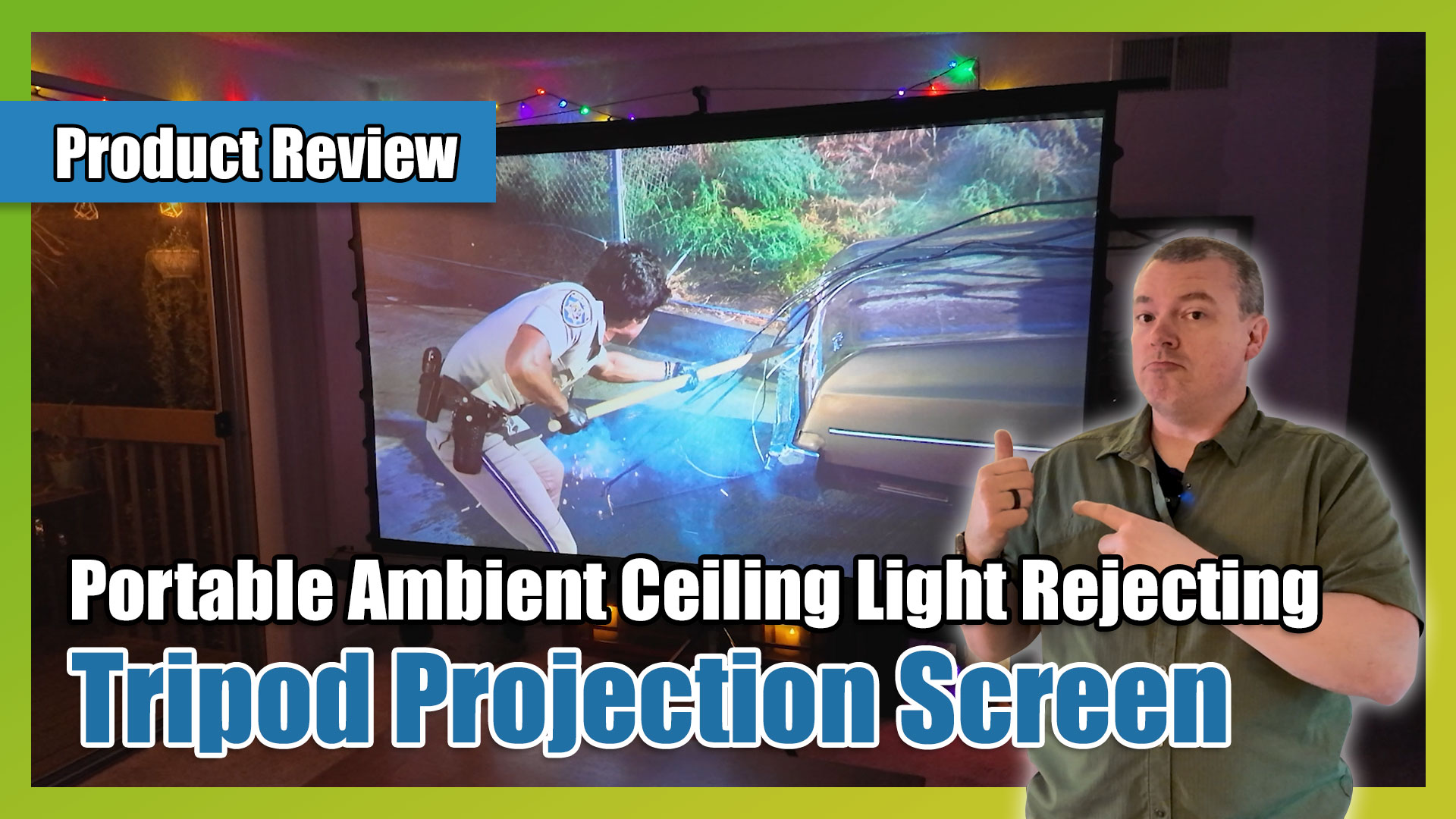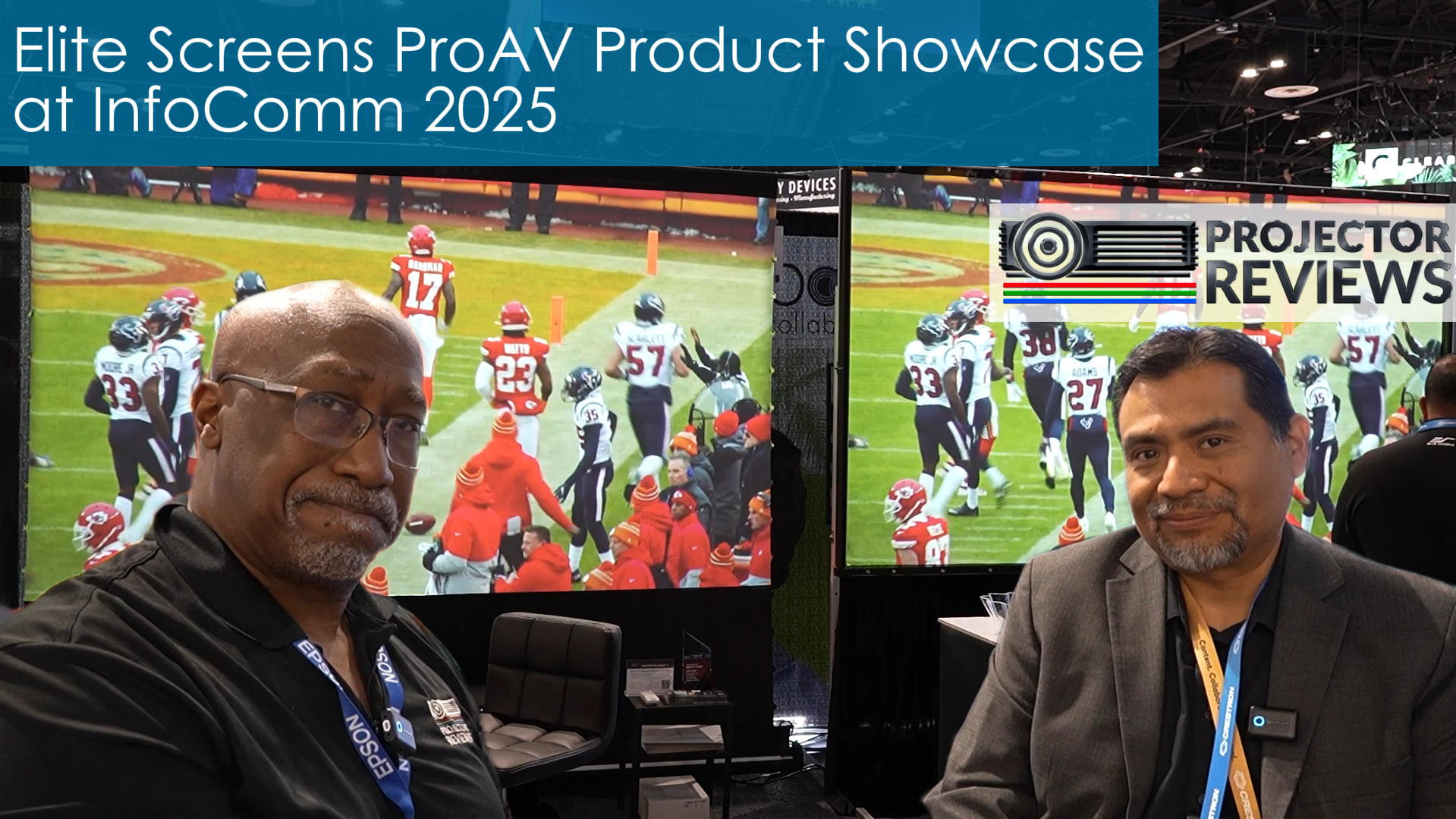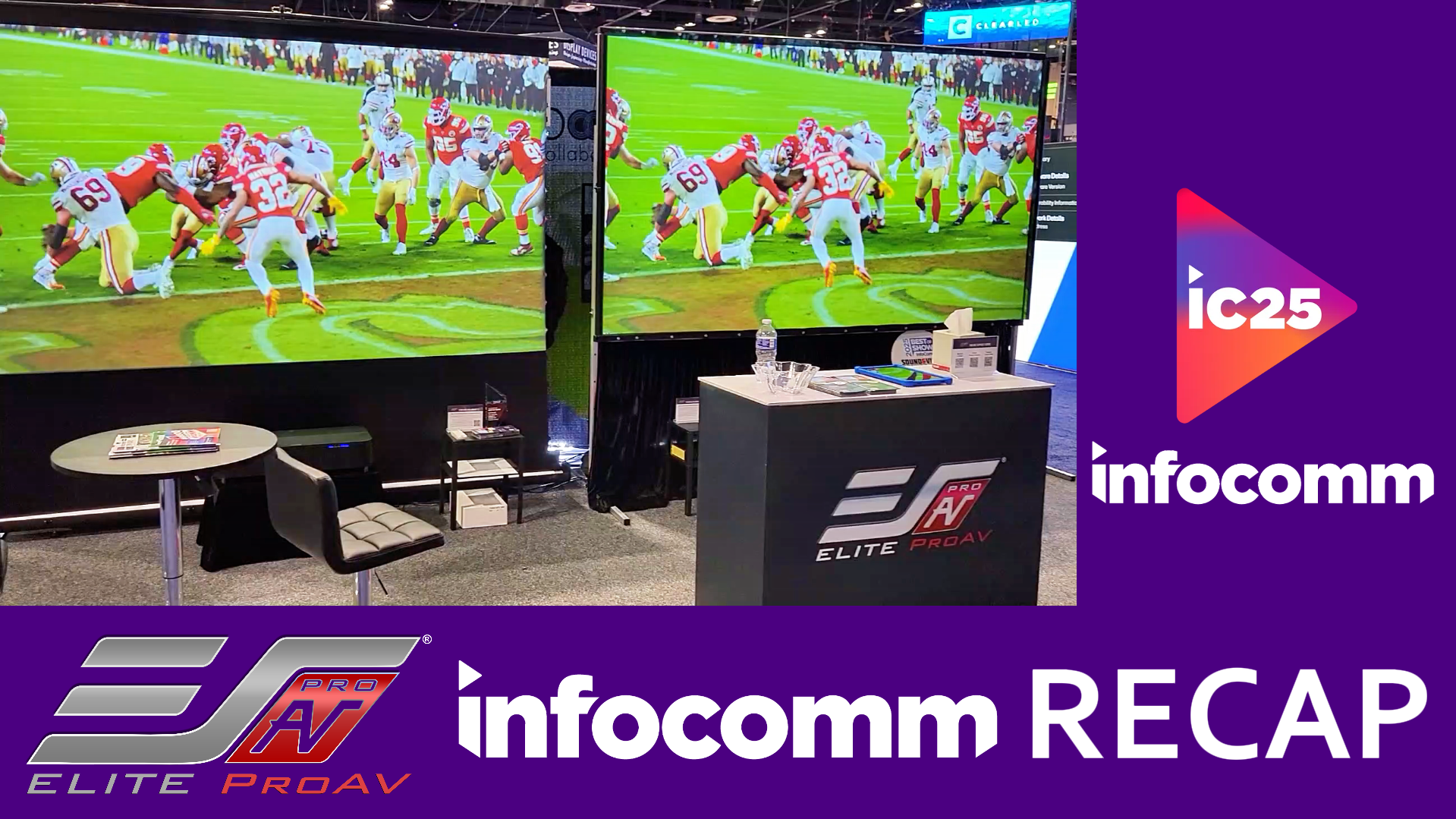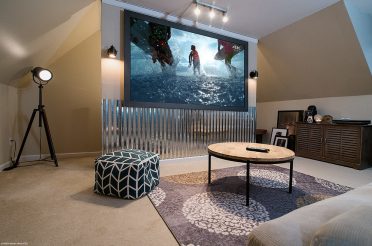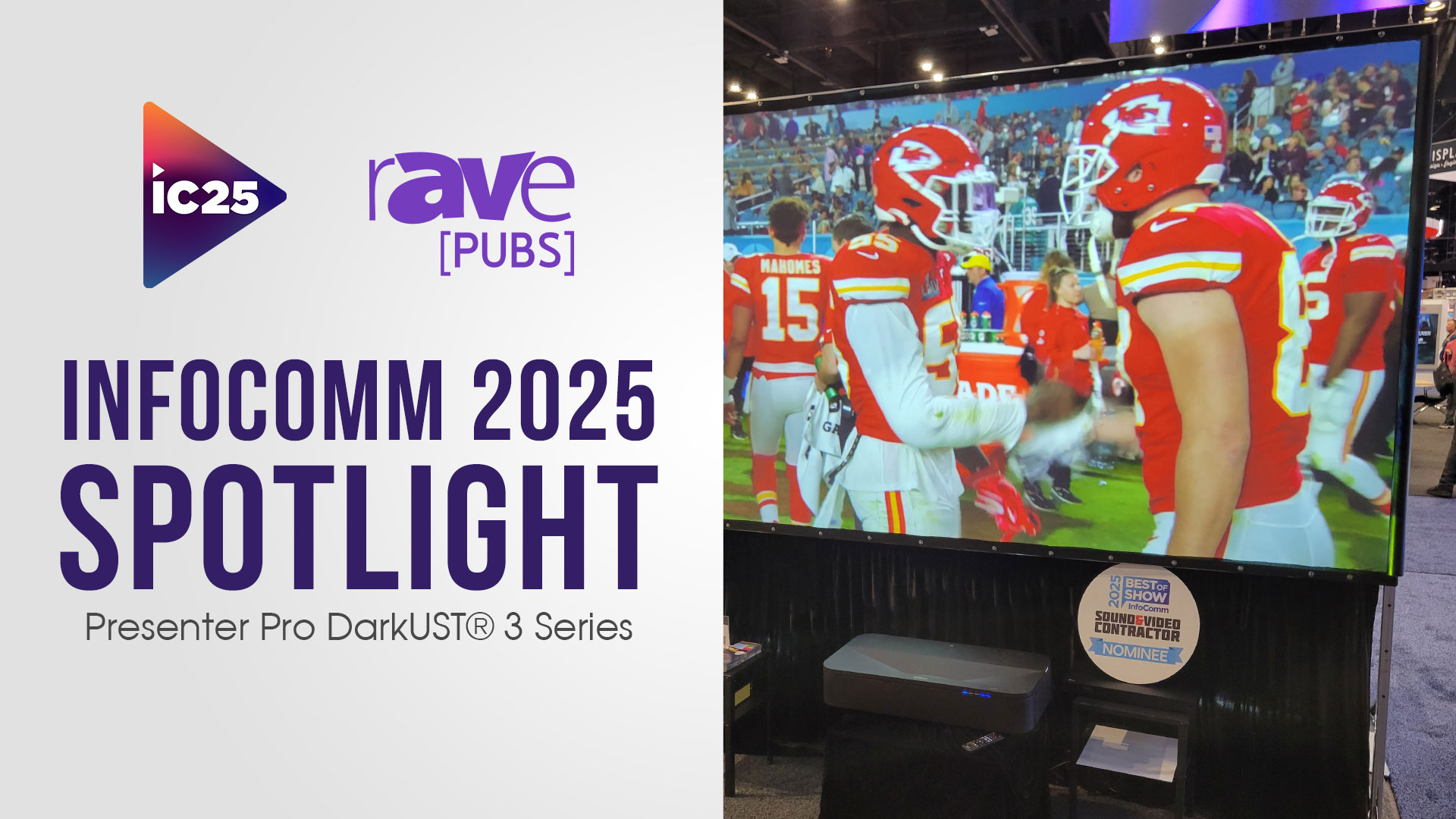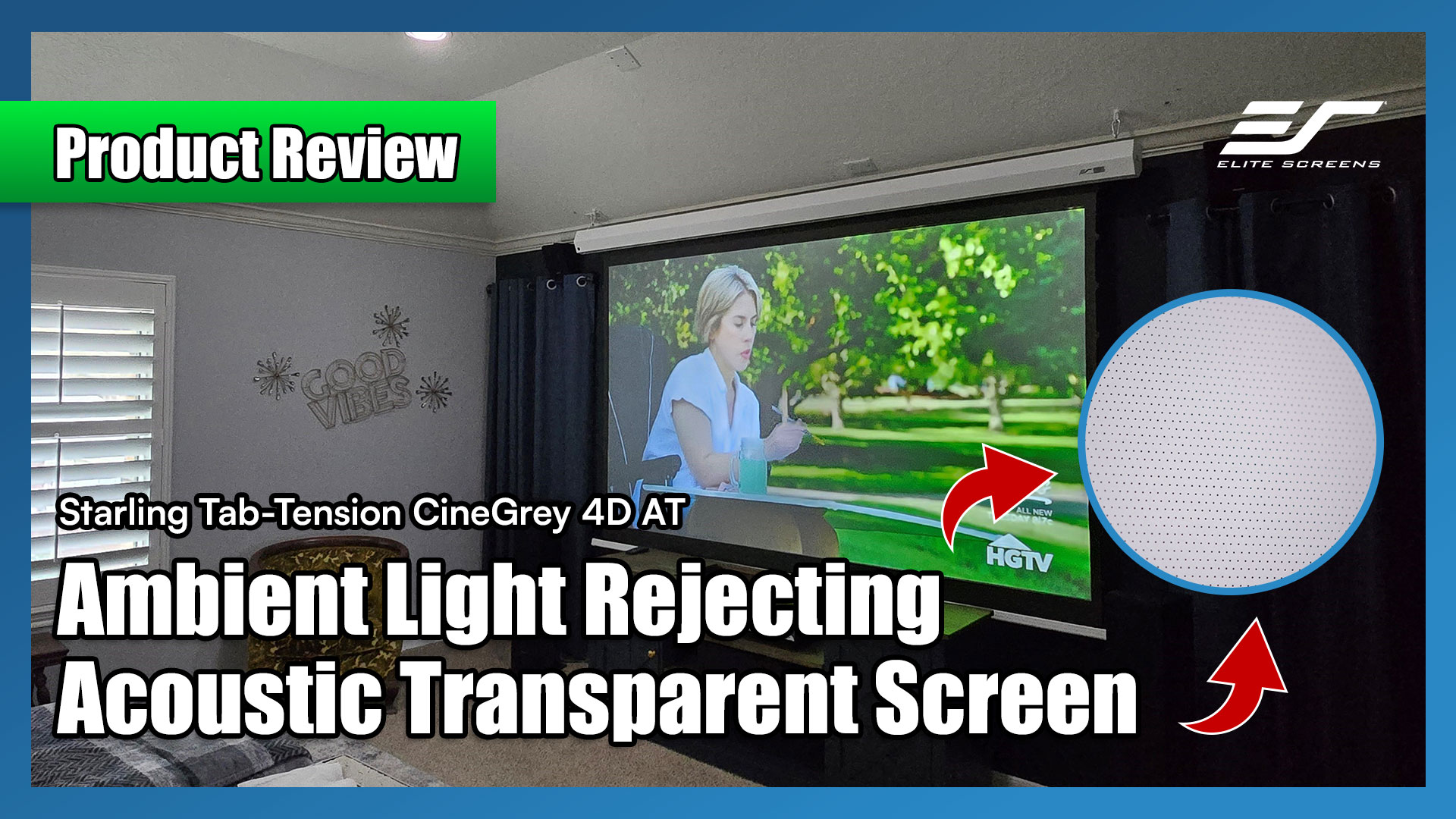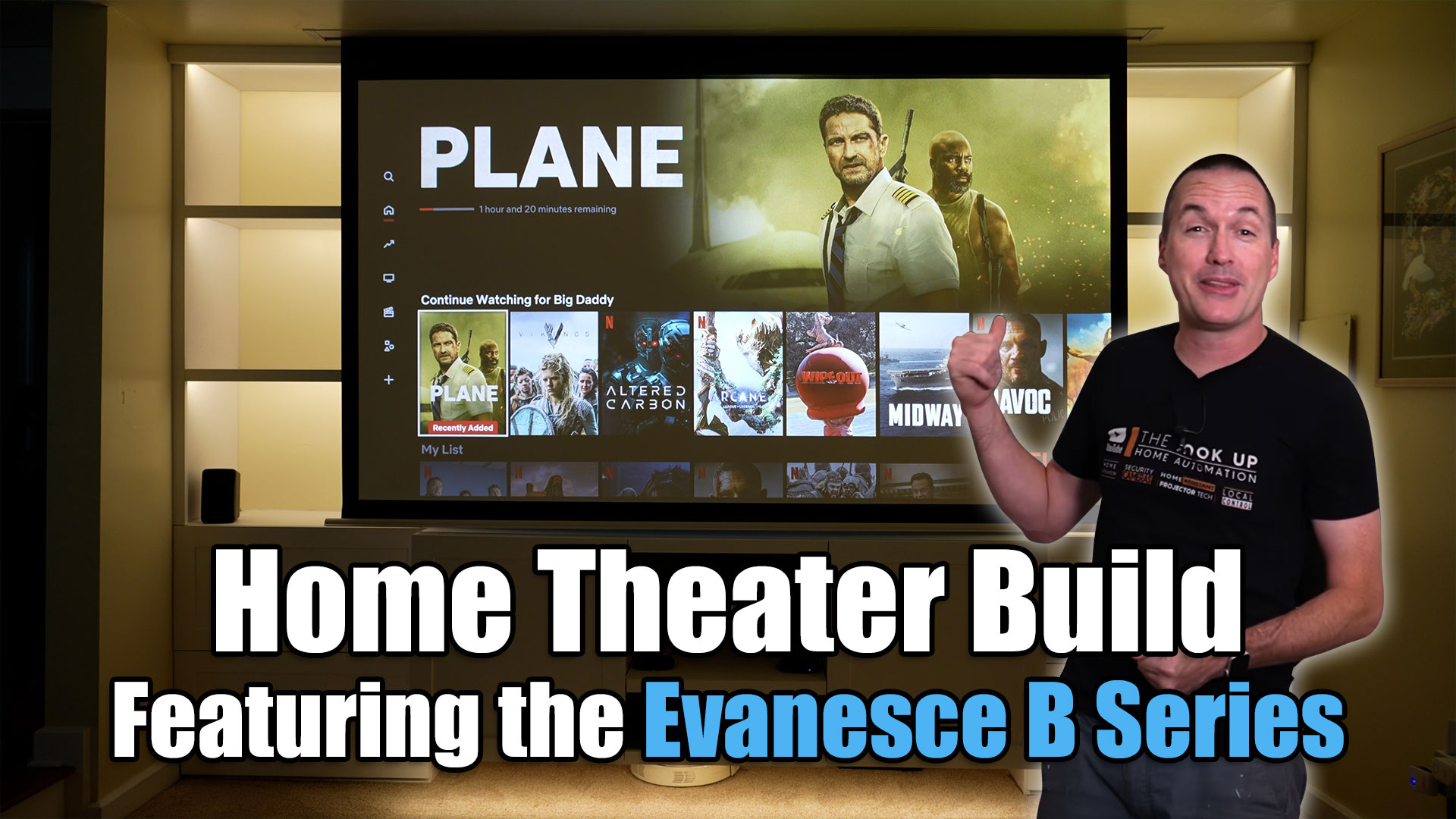A: Yes, you can buy a screen material sample by clicking here.
A: The AcousticPro UHD performs at its best in a light controlled environment, not in a room that will have ambient light. The material is a fabric with a special weave pattern for projection use. It is suggested to go with our standard CineWhite® material if a matte white screen is needed. Or better yet, our very best CineGrey 3D® or CineGrey 5D® material will perform better with a higher gain and Angular-Reflective front projection with ambient light rejecting technology.
A: For the instructional guide on synchronizing the ZU12V, please click here.
To watch the instructional video, please click here.
A: The entire material is made of the AcousticPro UHD, so it is transparent.
A: Both the Saker Tab-Tension and Spectrum Tab-Tension screens series will provide an excellent viewing surface and superior flatness levels. However, the Saker Tab-Tension series’ design and accessories enhancements make it an overall better screen. The first benefit is that the Saker Tab-Tension has sleeker design and finish. Its aluminum casing makes it more durable and resistant to moisture when compared to the steel casing found on the Spectrum Tab-Tension. Additionally the Saker Tab-Tension’s housing allows for the use of sliding wall/ceiling brackets making it easier to line up the brackets with the studs of a wall. On the other hand, the Spectrum Tab-Tension is only able to be mounted using the keyholes located on the endcaps. In regards to control options, the Spectrum Tab-Tension includes an IR remote that requires a direct line of sight with the sensor embedded in the screens end cap. The Saker Tab-Tension comes standard with both an IR and RF (radio frequency) remote control. The RF remote does not require a direct line of sight and has a longer range (100 feet) than the IR remote (30 feet). Lastly, the Saker Tab-Tension utilizes Elite’s MaxWhite® Fiberglass (FG) which is an improved version of the MaxWhite® screen material that is found in the Spectrum Tab-Tension. This is beneficial as the embedded fiber glass improves rigidity which results in a more stiff material. Thus, the MaxWhite® FG provides the flattest possible surface a non-tensioned screen can offer. Additionally, the fiber glass backing eliminates any side curling non-tensioned materials are susceptible to, especially under cold temperatures. Finally, the MaxWhite® FG is also flame retardant and complies with NFPA 701 Standards.
A: No, Elite manual and electric projection screens are not designed for use as a window curtain and should never be exposed to direct sunlight. Prolonged exposure to solar radiation will destroy synthetic materials and such damage is not covered by our standard warranty.
A: The Saker Tab-Tension is available with a black case only on the Acoustic Pro AUHD Models and in Europe. The Saker Tab-Tension screens with MaxWhite FG are only available with a white case in the United States.
A: Here is the full list of model numbers for the Starling Tab-Tension Series: SKT100XVW-E10, SKT120XVW-E9, SKT84XHW-E12, SKT100XHW-E12, SKT110XHW-E24, SKT120XHW-E20, SKT135XHW-E6, SKT106NXW-E24,SKT120NXW-E12
A: Each Elite Screens’ model number starts with the product series name. Follow by case color (if applicable, certain models only available in one color), screen material, screen aspect ratio and product series version. Lastly, extra black drop and its length (if applicable). Here is an example.
SKT 120 X W H -E20
- SKT: Saker Tab-Tension Series
- 120: 120” Diag.
- X: White Case (U= Black Case, N=White case as well)
- W: Spectra White FG material
- H: 16:9 Format
- -E20: Extra 20″ of Black Drop
A: Please click here for the motor information of your Elite electric screen.
A: The power cable length for all Saker Tab-Tension Series models is approximately 70.8″ (1.8M). Note: This measurement is accurate for USA only, other countries may be equipped with different lengths for each model.
A: The CineGrey 5D® and CineGrey 3D® is great for dark room environment also, but we must understand its limitations.
First of all, both materials have narrow viewing angles. So if you wish to have a wide seating arrangement after 80 degrees, you will notice a drop in brightness.
Second, because they are higher gain screens they reflect more projector brightness. This may tire your eyes, so we recommend using a less brighter mode if your projector has a such setting.
If that is not a problem, then these materials will work. And the best thing is, because they are angular reflective material, the projector’s light will not diffuse in all directions like a matte white material. Meaning that they will not scatter the projector’s light and create side lighting. Thus, eliminating the need to absorb it with black velvet or paint a room really dark.
Third, because both of these materials are made with a neutral gray substrate, the color balance and temperature will be exceptional. The dark gray also enhances contrast and great color saturation.
